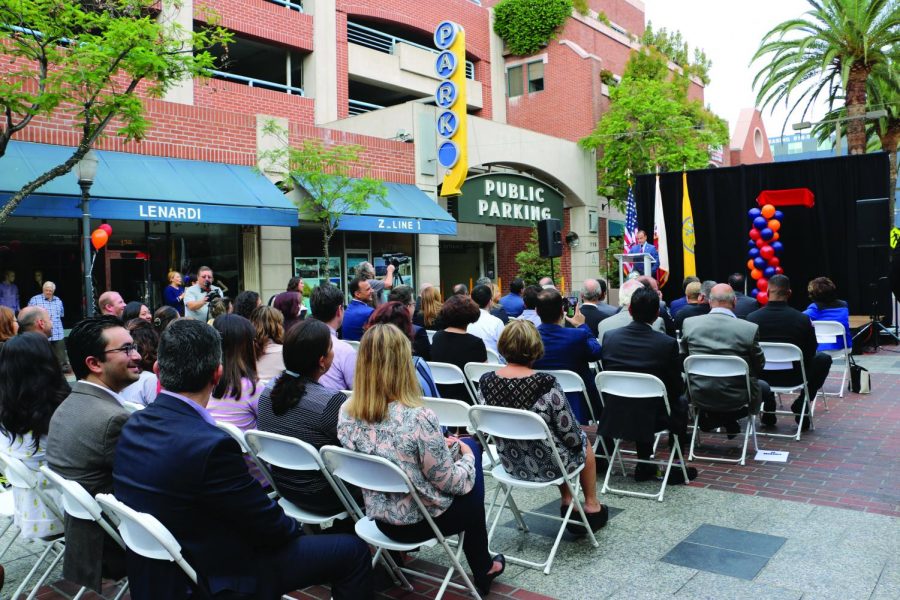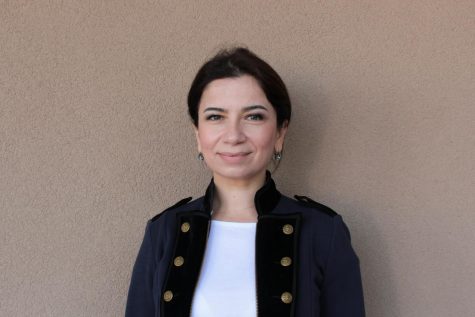A Piece of Artsakh
It’s the newest addition to the multicultural palette of the city
Members of the Glendale community gather for street renaming event.
“These are unordinary stones,” said Sen. Anthony Portantino as he made a cross shape with a dozen colorful stones that he had brought with him from his recent trip to the Republic of Artsakh.
Artsakh, formerly known as Nagorno Karabakh has a soft spot in the hearts of many Armenians. Despite being an integral part of historic Armenia, Artsakh forcibly became an enclave of Azerbaijan during the Soviet rule. Through the years, Armenians remained a majority in their historic lands. The decades of struggle and active war for reunification with the motherland, resulted in the creation of free Artsakh. Despite the ceasefire between the Azerbaijanis and Armenians, tension is still present.
The story of Artsakh has appealed to the Glendale City officials and many others around. It prompted them to approve the renaming of a small section of Maryland Avenue in order to honor its Armenian population and their legacy.
“The hall history of Artsakh represents American principals of liberty, freedom and equality which are the roots of the United States. Thus it is a right decision to name the place after the newly independent country,” said Zareh Sinanyan, mayor of Glendale.
Sinanyan delivered his speech during the opening ceremony of the Artsakh Avenue.
The initiative of having a street named after Artsakh came about by a youth group by the name of Unified Young Armenians. After long discussions and proposals, the decision was unanimously passed in Glendale City Council. Artsakh would be the first Armenian street name in Glendale.
“Glendale being a city where Armenians make up about 50 percent of the population, an Armenian presence is needed,” said Harutyun Harutyunyan, leader of UYA.
The opening ceremony was held at the newly-named alley between Wilson Avenue and Harvard Street, which was covered with the Armenian and American tricolor, marking a new era of promising ties of Artsakh and California.
“Two and a half weeks ago I was in Artsakh, in the frontline with soldiers. I was in the foxholes, and I said I’m going to grab some of the rocks that these brave soldiers are standing on,” said Sen. Portantino. “I’m proud to present them here.”
Hundreds of attendees were able to see the stone cross that Portantino created with stones from Artsakh foxholes, as later that evening they gathered to celebrate the naming of Artsakh Avenue.
“This project was introduced to create a place for Armenians to gather and spend time together and to tell the story of brave Artsakh Republic [to] those who will ask about the name of the street,” said Ani, a member of UYA. Glendale is a hub of many national minorities, and a number of streets that represent each culture. Artsakh Avenue is the newest addition to the multicultural palette of the city.


